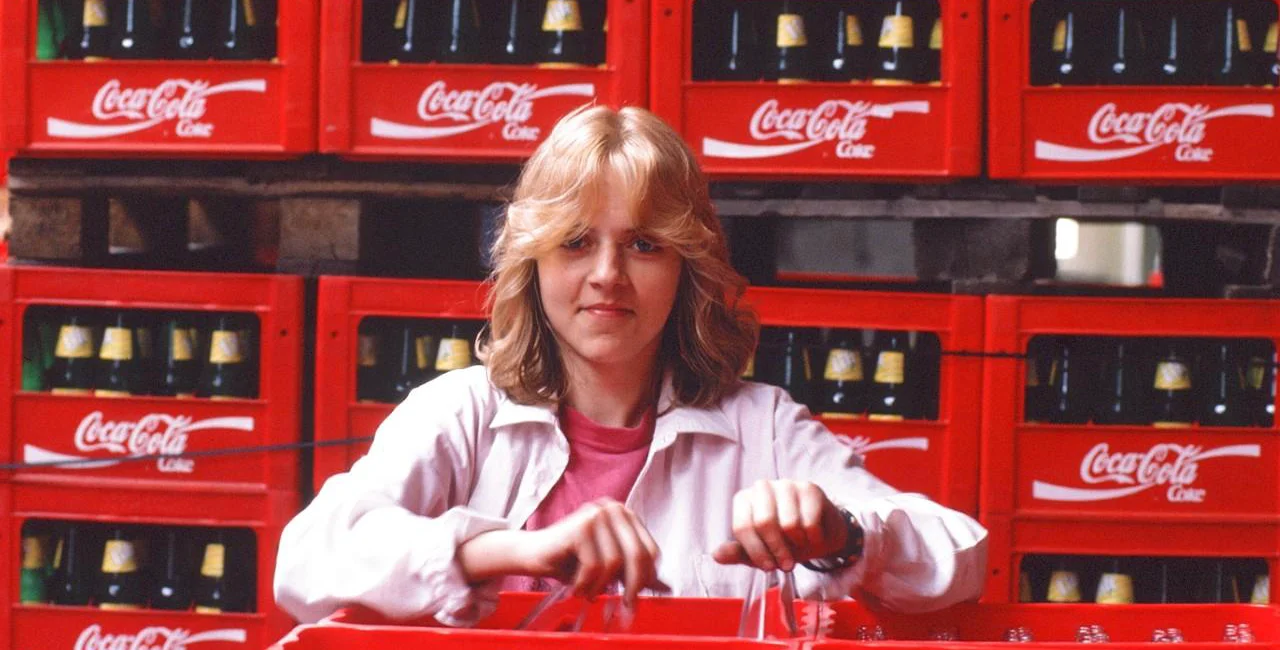It is 50 years since the first bottle of Coca-Cola was produced in Czechoslovakia. What makes the anniversary so unexpected is that 1971 was the near the start Normalization, the harsh communist-era crackdown on western reforms. The launch of a product that is seen as the flagship of capitalism seems rather odd for the time.
Coca-Cola first appeared in Czechoslovakia when the American Army got as far as Plzeň in May 1945, but it vanished quickly, remaining just a memory for a few in West Bohemia or those who were able to travel.
In 1968, with the Prague Spring economic reforms, communication began with representatives of The Coca-Cola Company in Rome, and a year later the national company Fruta Brno sent a draft contract to New York, naming the village of Modřice as a production site to serve the South Morvia region.
Production started in September 1971. Only one size was made – the 250 ml bottle – and only in the classic flavor. Czechoslovakia became the fourth socialist country where the Coca-Cola drink was produced and, globally, the 135th where it was sold. Bottling under license soon started in other regions of Czechoslovakia.
The beverage’s existence, though, seems to have been something close to a national secret. Only one in seven respondents to a STEM and FOCUS survey was able to guess that it has been available for 50 years. Most people will tell you while they might have heard about it, they did not actually taste it until after 1989.
That is because the average worker was unlikely to encounter Coca-Cola. In Czechoslovakia in the 1970s, culinary establishments were divided into four price groups, with most local eateries being third or fourth class. Coca-Cola was only available at first and second class restaurants, which were the realm of VIPs. It could also be found in Tuzex stores, where people needed special coupons as well as money to buy western goods, or on trains and planes.

Production then was less that a tenth of what it is now, which is still surprisingly high considering how limited access to it was. In 1971, some 3,073,190 crates of 24 quarter-liter bottles were produced in Modřice, for a total of 18,439,140 liters of Coca-Cola. The annual average production of the Kyje plant, which now serves both the Czech Republic and Slovakia, is currently more than 200 million liters of Coca-Cola in regular and diet varieties.
“Coca-Cola has been produced in the world for 135 years and operates in almost 200 countries. In the Czech Republic and Slovakia, it is celebrating an amazing 50 years. This is an extraordinary milestone for us and we appreciate that the Czechs and Slovaks are celebrating it with us” Natalia Stroe, CEO of The Coca-Cola Company CR/SR, said in a press release.
“Just as Coca-Cola beverages have been celebrating their most special moments with them for decades,” she added.
In the survey by STEM and FOCUS, 18 percent of the population of the Czech Republic and 19 percent of Slovaks stated that the Coca-Cola drink brings them associations with strong life moments, such as celebrations or holidays.
As with most state-run operations, changes came after the Velvet Revolution. In 1991, production in the state-owned company was taken over by a private bottler, Coca-Cola Amatil, Since then, the number of places where Coca-Cola can be bought has increased, as have flavor and packaging variants. Today it is sold in up to nine different variants.
Coca-Cola has been produced and bottled since 2000 by Coca-Cola HBC, a strategic partner of The Coca-Cola Company. Over the last 30 years, the Coca-Cola system has employed almost 10,000 people. It currently employs 943 people of 20 different nationalities. Almost 9 percent of the company's employees have been working for more than 25 years, according to the company’s figures.
Coca-Cola drinks were also produced in Slovakia in the village of Lúka, in the district of Nové Mesto nad Váhom, from 1994 until the Czech and Slovak branches of Coca-cola merged in 2017 to become Coca-Cola HBC Česko a Slovensko.
Coca-Cola drinks for both countries are now produced at the plant in Prague-Kyje. For both countries, Coca-Cola was a great economic benefit. Over the last 15 years, the company has paid CZK 3 billion in taxes in the Czech Republic and Slovakia, the company stated.
The local company history is tracked in YouTube video with Czech text and some historical photos.
The company launched celebrations in June with new packaging featuring line drawings of 50 Czech and Slovak landmarks. Events and contests will continue for the rest of the year.
They have also launched a project called 50 Places for a Good Deed. First aid will be taught to 500 employees from the non-profit sector in 30 locations in the Czech Republic and 20 in Slovakia.
“We are not forgetting those who need help. As part of the anniversary, in cooperation with selected long-term partners, the Czech and Slovak Red Cross, the Tereza Maxová Foundation, and Smile, we prepared a project entitled 50 Places for a Good Deed as a gift. It will help educate employees of children’s homes and other social services so that they can help those who really need it even better,” Joonas Mäkilä, marketing director of Coca-Cola HBC ČR/SR, said.












 Reading time: 4 minutes
Reading time: 4 minutes 



















